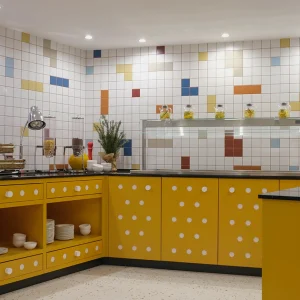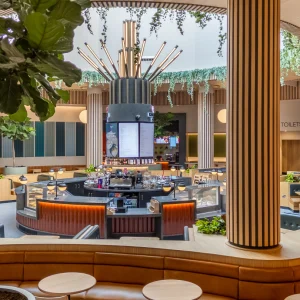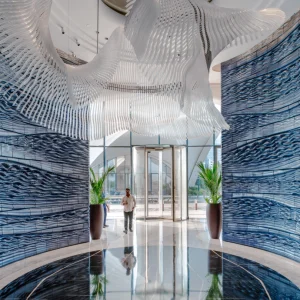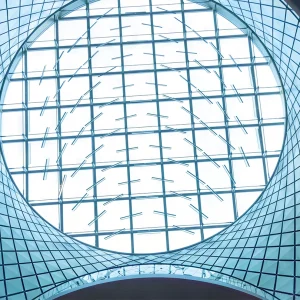
This week, Design Days Dubai opens its alliterative doors for the second time, and as a mark of its significance, the British Crafts Council is taking a group of UK-based craft makers and prominent galleries (including Gallery Libby Sellers, Gallery SO, Marsden Woo Gallery, and Vessel Gallery), representing 18 designers, to present the best of British craftsmanship.
In an exclusive conversation with Blueprint, Design Days Dubai director Cyril Zammit discusses the event, the readiness of Dubai as the epicentre for a regional art and design market, and of the coming wave – or should that be Gulf – of Middle Eastern design.
What to expect at Design Days Dubai 2013:
Design Days Dubai is now in its second year running; we have 29 galleries from the six continents taking part. It’s the very first time a design fair is hosting certain galleries – coming from everywhere, from Melbourne to Mexico – in the Middle East, and we have nine galleries from the Middle East itself. All are showing exclusively high-end collectible and limited edition designs only, so its really puts a status the fair in terms of quality.
As well as fresh new galleries from first time exhibitors, we have really strong established galleries, like Carpenters Workshop Gallery or R 20th Century. The majority of the work we’re showing is from contemporary designers. We have designers and artists from Mali, from Taipei.. It really makes us unique because no other fair in the Gulf and South Asian region is showcasing so many pieces from contemporary design world; contemporary design makes up about 80% of what we’re showing.
We also have three specific installations especially commissioned for Design Days Dubai; live performances from artists; a series of four design brands, showcasing skils and expertise and also a public programme of talks, workshops, seminars and lectures, throughout the week.
More on those specially commissioned installations:
One of the installations, called A Million Times (Time Dubai), is made by Swedish design duo Humans Since 1982, presented by Victor Hunt. It’s an amazing work comprising of 288 clocks, and these clocks are working on an analog-digital works. That means, basically, all the hands of the clocks are synchronised through a computer; you can write a message, play with (visual) waves – or of course use it to tell the time. It’s going to be the first time ever that this installation has been shown.
The second one is a duo from Italy called Analogia who are going to make an installation using invisible threads annd merino wool, to describe some classic designs from the fifties and sixties – like a sketch made out of wool, it’s very beautiful. And the third is a seating installation from Korea inspired by dunes in the desert and it’s a place where people can sit, relax and engage with the space, and that will be in the middle of the fair.
On the genesis of Design Days Dubai:
We’re the same company who organise Art Dubai, so after six succesful years of that, witnessing the growth of the art market in the Middle East, we felt that it was the right time now to have the international complement to the contemporary art in design. When we realised the maturity of the market here now, it made sense to provide the opportunity look at unique creations in the realm of design objects, in much the same way the market looks at unique creations in painting and in artwork. So a decision was made to launch Design Days Dubai last year and there was a very positive echo, because there’s nothing that similar in the entire region bringing so many leading galleries together, and giving people the opportunity to see a different dimension of ‘the object’. People were looking at a chair as a largely functional thing but not necessarily as an artwork or object of design.. the type of work we’re bringing shows an additional layer or dimension to an object that you normally see.
On nurturing a new market for design objects:
We tend to think of design as a new form of art, in a way.. So we’re trying to open a new dialogue with the visitors to say, you can look at the object, but we invite you to look beyond it. You might be looking at a very linear table, but it’s also about five, six or seven years of research behind it too, the material, the creativity, the production.
It is commercial; all the pieces are to be sold, there’s a trade side of it, which is absolutely clear. But the aesthetics is very important and the expertise we got from the management of Art Dubai for the last few years really helps us to have the possibility of initiating a new dialogue with the artistic in terms of design.
This is one of the reasons we wanted to have live performances on site, just to have people looking at design-in-the-making through designers. We have the Belgian designer Jens Praet, who will use resin to transform approximately six kilograms of shredded glossy paper from leftover magazines into a unique ‘Shredded’ Side Table during Design Days Dubai’s opening hours. We have Studio Swine, from the UK and Brazil, who will be making furniture pieces from recycled and leftover construction materials from sites in Dubai! We’ll have a workshop with Khalid Shafar, an Emirati designer, who will be working together with a long-established company from Ras Al Khaimah, in the north of the UAE, and they will be extracting pearls from oysters, and from that they’re going to create a chair; more than 8000 pearls will be used in the frame of the seat. So it’s about bringing the traditions and cultures of the Arabian Gulf together with the best of contemporary design.
On the emergence of a Middle Eastern design ‘wave’, and Design Days Dubai as a platform for local talent:
Well, the Middle East has enjoyed a long tradition of inspiring architects and designers around the world, and I think now, or since last year we have the opportunity to reopen the door to a lot of people; since 2012 the presence of the Middle Eastern galleries has doubled at Design Days Dubai. We know that a lot of the regional schools, for example in Qatar, Dubai, Sharjah are now running programmes in Product Design, we’re also hearing great things in Lebanon, Morocco, Kuwait and Saudi Arabia..
At Design Days Dubai we have started modestly, but it’s important that the people we bring on board can work at the same benchmark as the great international exhibitors. It’s important to us to be selective – we really want our best to be beside the world’s best, it’s important. And sometimes it creates an anticipation; perhaps you have to wait a little, but we think it’s worth it to bring you the best, and not necessarily some early sketches that might suffer from the comparison.
The talent is here.. So, just wait for a big wave of designers from this area. It’s going to be a very fresh approach to design from what the rest of the world is looking at
– Cyril Zammit, director of Design Days Dubai
So, just wait and I’m sure there will be a big wave of designers from this area. It’s still a question of small numbers right now, because a lot of people are still experimenting and facing the challenges of production but the talent is here and once they have the elements in their hands, it’s going to be very interesting. It’s going to be a very fresh approach to design, both sculpturally and in terms of aesthetics from what the rest of the world is looking at.
Future aspirations of Design Days Dubai:
The future is simple: we have have a few things we want to do. We’ve been asked by a lot of institutions in the region to consult with them to see if we can support them or support some dialogues with other countries in the GCC. But at the same time I think next year we’re going tolook at recreating a non-commercial platform which will allow up to five designers in the region or so to exhibit and have a platform alongside their peers. It’s just an idea, nothing is finalised as yet but it would be very interesting to set that up for 2014.
We know that there’s huge potential here, there’s such a fantastic market for all the diffrerent nationalities to come over and enjoy. We’re bringing as much diversity of design than the market can get, as I mentioned from Mali, from Taipei, from India, wherever. If you’re looking for something rare, exotic and different you’ll probably find it, but in a very strong qualitative and exquisite way, that’s something we’re taking good care of. So the expectation is that our visitors will embrace this
We hope to have the opportunity to reach out to our market, helping people to see functional objects also as art pieces, and also growing the appreciation of these pieces as a safe and great investment. That’s something that we want to promote; we’ll have people to walk people through the exhibition, in case they want to meet the people behind the galleries and help them see these objects as things that have a very strong value in the near future; that if you want a functional object, that’s absolutely possible, but that it can also be a great investment opportunity.





